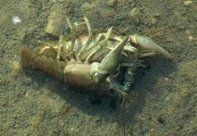
I learned about Second Life from NASA (my next post will be about seeing the shuttle launch) and I was kind of embarrassed that a technonerd like me had never heard of it. Anyway I have now and am introducing my students to it. Over 9 million avatars have been registered (yes some of those probably represent the same person - maybe as many as 1 million of them. So that means only 8 million actual people have experienced Second Life). In the past 30 days over 1 million people have been "in world" and typically, when I check, between 35,000 and 45,000 people are there at any one given time. I am working on it as a teaching/learning tool but yes, I did get a real charge out of visiting the deck of the Enterprise.
 Soon to come, a video of my experiences there. By the way, this is an adult world. Some areas are rated "mature" and others are PG. But you have to be 18 to participate. There is another world for teens called Teen Second Life (ages 13-18) and adults are restricted - they have to have a background check, a sponsoring institution like a school, and are limited to one island. Teens have to be validated by a parent. It is likely that a few creeps slip through the cracks but, since the environment is such that there are pretty good controls, apparently they tend to get reported fairly quickly. For little kids who want a virtual experience, try Club Penguin (http://www.clubpenguin.com).
Soon to come, a video of my experiences there. By the way, this is an adult world. Some areas are rated "mature" and others are PG. But you have to be 18 to participate. There is another world for teens called Teen Second Life (ages 13-18) and adults are restricted - they have to have a background check, a sponsoring institution like a school, and are limited to one island. Teens have to be validated by a parent. It is likely that a few creeps slip through the cracks but, since the environment is such that there are pretty good controls, apparently they tend to get reported fairly quickly. For little kids who want a virtual experience, try Club Penguin (http://www.clubpenguin.com).



















